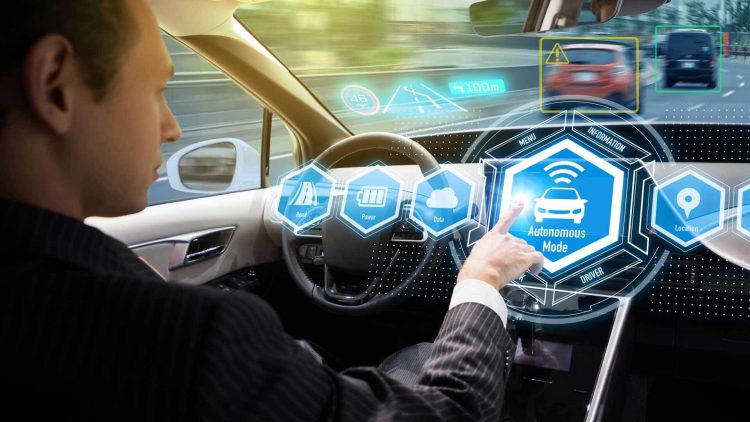The development of autonomous vehicles (AVs) marks one of the most transformative advancements in transportation technology. Over the past decade, we have witnessed a significant evolution in self-driving technology, with companies, research institutions, and governments investing heavily in this future of mobility. Autonomous vehicles have the potential to revolutionize the way we think about travel, urban planning, and even societal norms. While challenges remain, the continuous progress in artificial intelligence (AI), machine learning, sensor technology, and regulatory frameworks suggests that a future with AVs is closer than ever.
Introduction: The Promise of Autonomous Vehicles
Autonomous vehicles, often referred to as self-driving cars, are vehicles capable of sensing their environment and operating without human intervention. They rely on a combination of advanced sensors, AI, machine learning, and real-time data processing to navigate and respond to their surroundings. The promise of AVs lies not only in improving road safety, reducing traffic congestion, and enhancing mobility but also in their potential to lower emissions, reduce accidents, and transform the way cities are designed.
The journey toward fully autonomous driving has been fraught with technological, regulatory, and societal hurdles, but progress continues at an accelerated pace. Today, major automotive manufacturers, technology giants, and startups are racing to develop reliable and cost-effective self-driving systems. In this article, we will explore the technological advancements, key challenges, ethical considerations, and the potential impact of autonomous vehicles on various industries and society as a whole.
The Technological Foundations of Autonomous Vehicles
At the core of autonomous vehicle technology is a blend of sophisticated sensors, machine learning algorithms, and real-time data processing systems. These technologies work in harmony to allow the vehicle to perceive its environment and make informed decisions. Let’s break down some of the most critical components of AV technology.
1. Sensors and Perception Systems
The ability of an autonomous vehicle to “see” and understand its surroundings is one of the key factors in making self-driving possible. AVs use a combination of sensors, including:
- LIDAR (Light Detection and Ranging): This technology uses laser beams to measure distances and create a high-resolution 3D map of the vehicle’s environment. LIDAR is often considered the “eyes” of autonomous vehicles because it provides precise depth perception and object recognition, even in low visibility conditions such as fog or night-time driving.
- Cameras: Cameras are used to capture visual data and help the vehicle recognize objects, read traffic signs, detect lane markings, and identify pedestrians. Multiple cameras are placed around the vehicle to offer a 360-degree field of view.
- Radar: Radar sensors use radio waves to detect objects and measure their speed and distance. Radar is particularly useful for detecting other vehicles, cyclists, and pedestrians at a distance, even in challenging weather conditions like rain or snow.
- Ultrasonic Sensors: These are used for close-range detection, such as parking assistance, object avoidance, and low-speed maneuvering. They are often employed in conjunction with other sensors for more accurate perception at shorter distances.
2. Machine Learning and Artificial Intelligence
Machine learning plays a crucial role in enabling autonomous vehicles to process the vast amount of data collected by the sensors. Using algorithms and neural networks, AVs can continuously improve their decision-making abilities based on experience. Machine learning enables AVs to:
- Object detection: By analyzing patterns in the sensor data, AVs can identify pedestrians, other vehicles, road signs, traffic lights, and obstacles.
- Path planning: Once an AV has a clear understanding of its surroundings, it must make decisions about how to navigate the environment. Machine learning models help the vehicle plan an optimal route while avoiding obstacles and following traffic laws.
- Behavior prediction: AI systems also predict the behavior of other road users. For instance, an AV can anticipate whether a pedestrian is about to cross the street or if another vehicle will change lanes.
3. Vehicle Control and Automation Systems
Once the AV has gathered and processed the necessary data, it must translate this information into vehicle control actions. This includes accelerating, braking, steering, and turning. The control systems rely on sophisticated algorithms that translate the AI’s decisions into real-world actions. These systems need to be fast, reliable, and safe, especially in real-time situations where split-second decisions can make the difference between safety and accidents.
Levels of Automation: From Assistance to Full Autonomy
The development of autonomous vehicles is often categorized into levels, from Level 1 (basic driver assistance) to Level 5 (full autonomy). These levels, defined by the Society of Automotive Engineers (SAE), help clarify the extent of automation in a vehicle.
- Level 1 (Driver Assistance): Basic features such as adaptive cruise control or lane-keeping assistance, where the driver is still in full control of the vehicle.
- Level 2 (Partial Automation): More advanced features, including systems that can control both steering and acceleration, but the driver must remain actively engaged.
- Level 3 (Conditional Automation): The vehicle can handle all driving tasks in certain conditions (e.g., highway driving), but the driver must be ready to intervene if necessary.
- Level 4 (High Automation): The vehicle can drive itself under specific conditions (such as within a defined geographic area), but may still require human intervention in complex scenarios.
- Level 5 (Full Automation): The vehicle is fully autonomous and requires no human intervention in any environment or condition.
Currently, most autonomous vehicles on the road are at Level 2 or Level 3, with limited trials of Level 4 vehicles in controlled environments.
Key Challenges in Autonomous Vehicle Development
While the potential for autonomous vehicles is immense, several challenges must be overcome before they become commonplace. These challenges span technological, regulatory, and societal realms.
1. Safety and Reliability
One of the most critical concerns surrounding AVs is safety. Although autonomous vehicles are designed to eliminate human error, they must be proven to be as safe—or safer—than human-driven vehicles. This requires extensive testing in a wide range of environments and situations. AVs must be able to handle:
- Unpredictable road conditions: Poor weather, roadwork, or unexpected obstacles can challenge even the most advanced systems.
- Ethical decision-making: In emergency situations where accidents are inevitable, AVs may face ethical dilemmas. Should the car prioritize the safety of its passengers or pedestrians? Developing an ethical framework for AV decision-making is a complex task.
2. Regulatory and Legal Issues
The regulatory landscape for autonomous vehicles is still evolving. Governments around the world are grappling with how to establish laws and standards for AV testing and deployment. Key regulatory challenges include:
- Liability and insurance: If an AV is involved in an accident, who is responsible? Is it the manufacturer, the software developer, or the vehicle owner? Legal frameworks must address these questions clearly.
- Data privacy: AVs collect vast amounts of data, including information about their passengers, routes, and surroundings. Ensuring the privacy and security of this data is critical.
- Road rules and infrastructure: Autonomous vehicles must navigate roads that were designed for human drivers. This includes adhering to traffic laws, understanding human driver behaviors, and interacting with existing road infrastructure, which may not be optimized for self-driving technology.
3. Public Perception and Acceptance
Public perception is another barrier to the widespread adoption of autonomous vehicles. Many people remain skeptical about the safety and reliability of AVs, particularly after high-profile incidents involving self-driving cars. Gaining consumer trust requires:
- Transparency: Manufacturers must be open about the technology behind their vehicles and how they are tested.
- Education: The public must be educated about how AVs work, their benefits, and their limitations.

The Economic and Societal Impact of Autonomous Vehicles
The rise of autonomous vehicles is set to bring about far-reaching changes to various sectors of the economy. While the transformation promises to bring many benefits, it will also pose challenges.
1. Transportation and Mobility
Autonomous vehicles are expected to revolutionize transportation in several ways. They could:
- Increase accessibility: Self-driving cars could provide mobility for elderly individuals, people with disabilities, and others who cannot drive.
- Reduce traffic congestion: By optimizing driving routes and reducing accidents, AVs could help reduce traffic jams and improve overall traffic flow.
- Shared mobility: The proliferation of autonomous taxis and ride-sharing services could lead to a shift from private car ownership to shared transportation.
2. Impact on Employment
The widespread adoption of AVs could have significant implications for employment, particularly in industries related to driving. Professions such as trucking, delivery, and taxi services could be disrupted as autonomous vehicles replace human drivers. However, the rise of AVs will also create new job opportunities in fields such as AI development, vehicle maintenance, cybersecurity, and regulatory compliance.
3. Environmental Impact
Autonomous vehicles have the potential to reduce emissions by improving fuel efficiency, reducing traffic-related idling, and enabling better coordination of transportation systems. Additionally, the integration of AVs with electric vehicle (EV) technology could further reduce the carbon footprint of the transportation sector.
The Road Ahead: Autonomous Vehicles in the Future
While fully autonomous vehicles are not yet a common sight on the roads, we are steadily moving toward that reality. As technology continues to advance, the regulatory landscape evolves, and public acceptance grows, the future of autonomous vehicles looks promising. However, the road to widespread adoption is still long, and the journey will require overcoming significant hurdles, particularly related to safety, ethics, and infrastructure.
In the coming years, we can expect to see increased collaboration between automakers, technology companies, and governments to address these challenges and develop solutions that make AVs safer, more reliable, and more accessible to the public.
Conclusion
The development of autonomous vehicles is one of the most exciting frontiers in transportation technology. While challenges remain, the progress made so far offers a glimpse into a future where autonomous cars are a common sight on our roads, improving safety, efficiency, and accessibility for all. The convergence of AI, machine learning, and sensor technology, along with strong regulatory frameworks, will drive the evolution of self-driving vehicles, and it is clear that their impact will be felt across industries and societies for years to come.












































